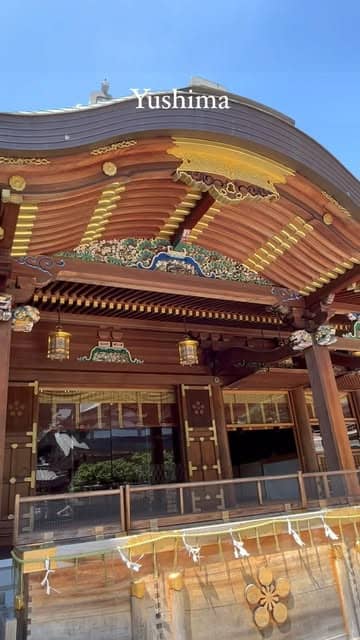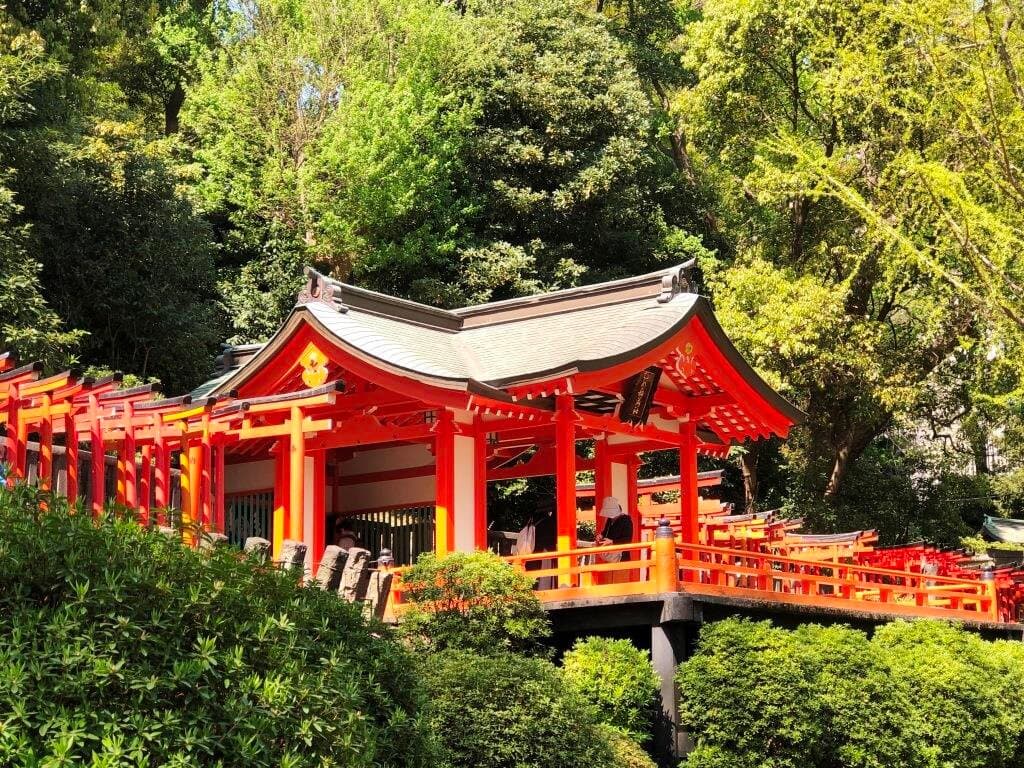
Yushima Tenmangu Tokyo
Ancient Tokyo shrine dedicated to learning, famous for its vibrant plum blossoms and tranquil atmosphere.

Highlights
Must-see attractions

Social
From TikTok & Reddit
Best Time
Stunning plum blossoms bloom

Yushima Tenmangu Tokyo
Best Time
Stunning plum blossoms bloom

Highlights
Must-see attractions
Ancient Tokyo shrine dedicated to learning, famous for its vibrant plum blossoms and tranquil atmosphere.
"A hidden oasis of history and tranquility in Tokyo, an unexpected yet unforgettable discovery."

🎯 Visit during Plum Festival
Experience the vibrant plum blossom festival with stalls and performances. Usually late Feb to early Mar.
🚶♀️ Walk from nearby stations
Enjoy a scenic 25-30 min walk from Ueno Okachimachi or Hongo Sanchome stations.

Highlights
Discover the most iconic attractions and experiences

Plum Blossom Festival
Shrine grounds
Witness hundreds of plum trees in bloom, creating a fragrant and picturesque spectacle. A truly magical experience.

Deity of Learning
Main shrine hall
Pray for academic success at this shrine dedicated to Sugawara no Michizane, the god of learning.

Ancient Architecture
Shrine grounds
Explore the elegant wooden structures and intricate carvings of this historic shrine, founded in 458 AD.

Chrysanthemum Exhibition
Shrine grounds
Admire the beauty of meticulously arranged chrysanthemum flowers, a symbol of the Japanese Imperial Family.
Plans like a pro.
Thinks like you
Planning Your Visit
Timing is Key for Plum Blossoms
Seek Serenity Beyond Peak Hours
Best Times
Insider Tips
from TikTok, Instagram & Reddit
🎯 Visit during Plum Festival
Experience the vibrant plum blossom festival with stalls and performances. Usually late Feb to early Mar.
🚶♀️ Walk from nearby stations
Enjoy a scenic 25-30 min walk from Ueno Okachimachi or Hongo Sanchome stations.
🌙 Nighttime beauty
The shrine is beautiful at night, but Goshuin stands close at 5 PM.
📜 Goshuin options
Various Goshuin available, including limited editions. Regular stamp is 500 yen.
Tips
from all over the internet
🎯 Visit during Plum Festival
Experience the vibrant plum blossom festival with stalls and performances. Usually late Feb to early Mar.
🚶♀️ Walk from nearby stations
Enjoy a scenic 25-30 min walk from Ueno Okachimachi or Hongo Sanchome stations.
🌙 Nighttime beauty
The shrine is beautiful at night, but Goshuin stands close at 5 PM.
📜 Goshuin options
Various Goshuin available, including limited editions. Regular stamp is 500 yen.
🌸 Check bloom status
Plum blossoms are best in late February. Check local forecasts for peak bloom.
What Travellers Say
Reviews Summary
Yushima Tenmangu Shrine is lauded as a tranquil, historic gem in Tokyo, particularly celebrated for its stunning plum blossoms and its dedication to the god of learning. Visitors appreciate its serene atmosphere, beautiful architecture, and the vibrant seasonal festivals, though some note that facilities like the Goshuin stand close early.
"This an ancient secluded Shinto shrine near Tokyo University and appropriately is dedicated to the Shinto god of learning. The shrine is also notable for its plum trees and there is an annual celebration of the blossom held in the late winter.. The shrine was very quiet when we visited on a rainy October day but the site is well worth the trip,"
Bernard Savage
"We visited during the Plum Festival in winter 2023 and it was an amazing experience. I got to watch performances, enjoy the stalls, and the plum blossoms were stunning.
I returned in winter 2024 and they didn’t disappoint. I absolutely love this place and can’t wait to go back 🫶🫶🫶"
Patricia Nicole Belencion
"Beautiful shrine, kind of hidden on a hill. It’s open later then others and at night it’s really beautiful but don’t forget the Goshuin (stamp) stand still closes at 17:00. There were a lot of Goshuin options, with limited editions, however only the regular one is stamped, the others are printed. The regular is 500¥ and the others vary (500-1200¥). No wait."
Olympe
What People Like
What People Dislike
Frequently Asked Questions
🚇 🗺️ Getting There
Yushima Tenmangu Shrine is easily accessible by public transport. The closest stations are Yushima Station (Chiyoda Line) and Hongo-sanchome Station (Marunouchi/Oedo Lines), both a short walk away. Many visitors also enjoy a scenic 25-30 minute walk from Ueno Okachimachi Station.
Yes, Yushima Tenmangu Shrine is located quite near Ueno Park, making it a convenient addition to a day exploring the park and its surrounding attractions.
While a longer walk, it's possible to walk from Tokyo Station to Yushima Tenmangu Shrine, which can take around an hour. This offers a chance to see more of the city.
The nearest subway lines are the Tokyo Metro Chiyoda Line (Yushima Station) and the Marunouchi/Oedo Lines (Hongo-sanchome Station).
While it's a 'hidden gem' and can feel secluded, following signs from the nearest stations will lead you there. The climb up the stone steps is a distinctive feature.
🎫 🎫 Tickets & Entry
No, there is no entrance fee to visit the grounds of Yushima Tenmangu Shrine. You can explore the shrine freely.
The shrine grounds are generally open from early morning until late afternoon. However, specific buildings or stalls, like the Goshuin stand, may have earlier closing times, often around 5 PM.
The plum blossom festival typically takes place from late February to early March, when the shrine's approximately 300 plum trees are in full bloom.
Yes, during the plum blossom festival, you can expect traditional stalls, performances, and a lively atmosphere.
Yes, you can get a Goshuin (shrine stamp). They offer various designs, including limited editions, with the regular one costing 500 yen. Note that the Goshuin stand closes at 5 PM.
📸 📸 Photography
The shrine grounds offer many picturesque spots, especially during the plum blossom season. The main hall, stone steps, and the blooming plum trees are popular subjects.
Photography is generally allowed in the outdoor areas of Yushima Tenmangu Shrine. Always be respectful of worshippers and avoid intrusive photography.
The shrine is described as beautiful at night, but be aware that lighting might be limited, and some facilities like the Goshuin stand will be closed.
Early mornings or late afternoons can offer softer light and fewer crowds, enhancing photographic opportunities. During the plum blossom festival, the vibrant atmosphere itself is a great subject.
A versatile camera that can handle both wide shots of the grounds and details of the architecture or blossoms would be ideal. A smartphone camera is also perfectly capable of capturing the beauty here.
🎫 🌸 Nature & Seasons
The plum blossoms typically bloom from late February to early March, making this the most popular time to visit.
Yes, Yushima Tenmangu also hosts a Chrysanthemum Festival, celebrating the flower that represents the Japanese Imperial Family.
Outside of the peak blossom season, the shrine offers a more tranquil and serene experience, allowing visitors to appreciate its historical architecture and peaceful atmosphere.
While Yushima Tenmangu is famous for its plum blossoms, it is not primarily known for cherry blossoms. The shrine's main floral attraction is the ume (plum).
Late February and early March in Tokyo can still be quite cool, with average temperatures ranging from 5-15°C (40-60°F). It's advisable to dress in layers.
For Different Travelers
Tailored advice for your travel style
👨👩👧 Families with Kids
📚 Students and Academics
🚶♀️ Solo Travelers and Explorers
Deep Dives
In-depth insights and expert knowledge
The Deity of Learning: Sugawara no Michizane
The shrine's history is deeply intertwined with Michizane's life and posthumous deification. Originally founded in 458 AD, it was later rebuilt and dedicated to him, solidifying its reputation as a place of academic prayer. The presence of numerous ema hanging around the shrine grounds is a visual testament to the hopes and dreams of students who visit. It’s a powerful reminder of the enduring cultural significance of scholarship in Japan.
A Spectacle of Plum Blossoms
Visiting during the plum blossom season offers a unique sensory experience. The air is filled with the sweet, delicate scent of the blossoms, and the visual spectacle of the trees in full bloom against the backdrop of the shrine's traditional architecture is truly breathtaking. It's a time when the shrine becomes a vibrant hub of activity, offering a glimpse into Japanese festival culture. Even outside of the festival, the beauty of the plum trees makes a visit worthwhile.
Tranquility Amidst the Metropolis
This sense of calm is particularly noticeable on weekdays or during off-peak hours. Even when events like the plum blossom festival are underway, the shrine manages to retain a spiritual and enlightening aura. The contrast between the distant hum of modern Tokyo and the quietude within the shrine is striking, making it a perfect spot for reflection and a moment of peace.


Social
from TikTok, Instagram & Reddit